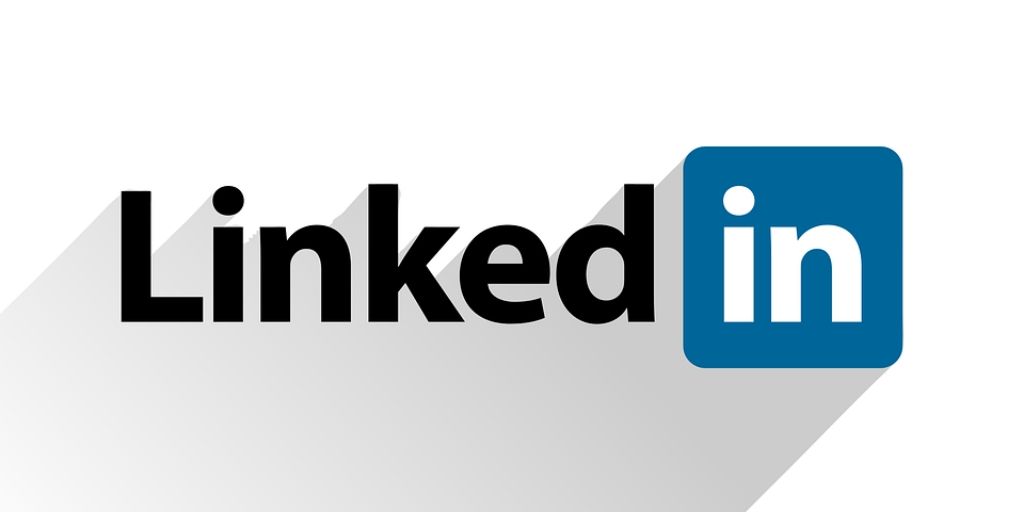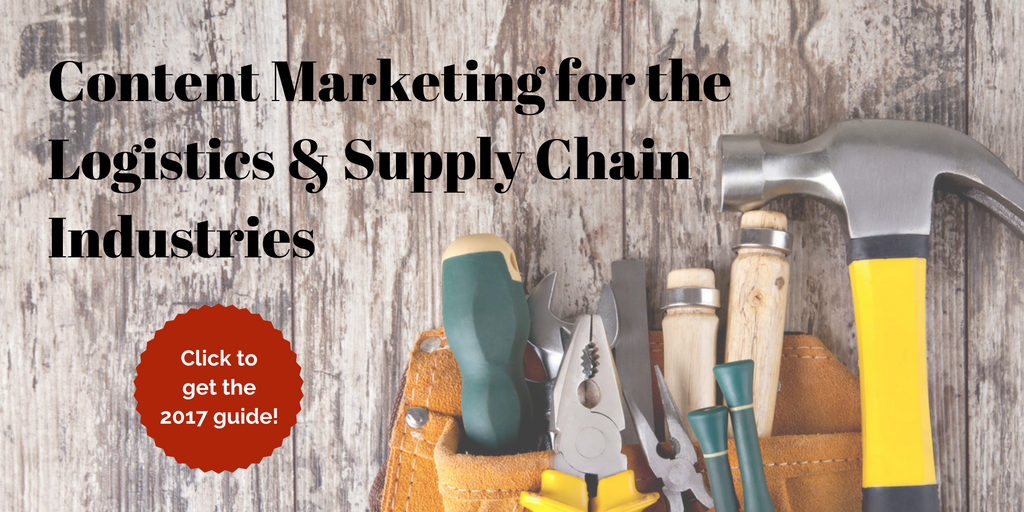
by Fronetics | Jan 28, 2020 | Blog, Logistics, Marketing, Social Media, Supply Chain
Digital marketing over social media is a trend that continues to grow, but it’s only effective if you’re doing it right. Here are social media mistakes supply chain brands are still making.
Highlights:
- When it’s done right, there’s no greater tool for your company to increase brand awareness and generate leads than an engaged presence on social media platforms.
- Knowing what content hits home with your followers and potential followers is crucial.
- The most successful companies on social media are the ones that find innovative and creative ways to engage with users.
It’s no mystery why approximately 81 percent of small and medium businesses maintain a social media presence. With 3.5 billion users worldwide, social media is a dream come true for businesses looking to reach a ton of potential customers.
Digital marketing over social media is a trend that continues to grow, as more businesses jump on the social media bandwagon. When it’s done right, there’s no greater tool for your company to increase brand awareness and generate leads than an engaged presence on social media platforms. But it can be virtually useless if your company isn’t doing it right.
Traditional marketing strategies may be misleading for companies hoping to connect with customers over social media. And familiar ways of using social media for personal use can also lead marketers astray. The most effective use of social media for your business centers on knowing your audience and positioning your brand within the right conversations, rather than promoting your product or service.
Are you making social media mistakes? Check out our list of the most common blunders we see companies making to find out.
Mistake #1: Not knowing the audience
Everyone understands how a billboard works. It advertises something for sale where it can be seen by as many people as possible. But for companies looking to increase their effectiveness, that’s a big social media mistake. The most important thing a brand can do on social media is to engage dynamically with other users. And to do that, companies first have to figure out who their audience really is.
It’s surprising how often brands don’t have a clear idea of who they’re trying to connect with on social media. Knowing what content hits home with your followers and potential followers is crucial. And collecting followers and promoting your brand visibility with the right audience means figuring out what other interests your target demographics might have.
So, how do you develop a profile of who your audience is? The first step is to put together a detailed description of your target buyer persona. It’s important to consider details such as the location, education level, and role in the industry of the buyers you’re hoping to reach. Based on this profile, marketers can more precisely pinpoint the needs and concerns of their target audience. This is vital for being able to anticipate the groups to join where potential buyers are most likely to be found.
Bottom line: engage with your audience! Once you have figured out who that audience is, join groups, encourage and leave comments, and pay attention to what your followers care about.
Mistake #2: Using objectives instead of strategy
The best way to use social media for digital marketing involves developing a clear strategy for attracting followers, delivering content, and achieving an ROI. Unlike personal use of social media, effective digital marketing depends on maintaining a regular schedule of generating content. Knowing how often to post content or update profiles can make a huge difference for staying on the top of newsfeeds at key times of day.
Generating new content is crucial for keeping followers engaged and attracting the attention of potential new followers. A variety of different kinds of content prevents followers from tuning out or skimming past your company’s posts. Partnering with brand ambassadors and market influencers boosts the organic visibility of your brand: by working with prominent social media users, your company can benefit from dynamic interactions with brand ambassadors who your target audience follows and views as authentic.
Following a strategy can also help achieve and measure your ROI. It can be particularly difficult to prove the ROI of a company’s participation in social media, so it’s especially important to use analytics tools for tracking how your social media presence is doing. Social Media Examiner’s 2018 Social Media Marketing Industry Report found that only 44 percent of marketers agree that they know how to measure social media ROI, leaving two-thirds of marketers aren’t sure whether their efforts online are paying off. Measuring defined goals against analytics data can help your company identify and react to effective techniques, and improve your social media standing.
Mistake #3: Using the most popular social media platforms
Although the social media platforms with the most users may seem like the most effective platforms for digital marketing, platforms that allow you to engage with your audience can carry more weight than more popular platforms.
All social media channels have a differentiating quality that makes them appealing to specific audiences. So, start by identifying where your target audience is spending their time. For instance, if you are interested in reaching millennial buyers, then your social media efforts should definitely include platforms such as Twitter that millennials tend to use on at least a daily basis.
Once you’ve determined the most effective platforms for your company to concentrate on, be sure to tailor your content to those platforms. Although it’s easy to post the same content across all your accounts simultaneously, the foundation of social engagement is authenticity. Especially with automation tools, many companies post copied-and-pasted content on multiple platforms all at once. But this strategy risks undermining the authenticity of your brand. Work to create content—including video and images—that caters to specific platforms to build brand awareness and loyalty.
Mistake #4: Promoting instead of connecting
This is the big one! Social media platforms are all about fostering engagement among users. Users don’t want to engage with brands that push their products and services through standard marketing techniques. Instead, users will be drawn to companies that appear engaged with the same interests and objectives that they are. Users want informative, interesting, and, yes, even fun content.
The most successful companies on social media are the ones that find innovative and creative ways to engage with users. Brand loyalty arises from emotional bonds and trust that can form through social media interactions.
Greg Hadden, executive director of Motive Made Studios, sums up the power of connecting with users: “What often gets lost is the fact that good storytelling is potent stuff. It has the power to make people want to believe and to belong, which is the goal of all storytellers. We’re all selling something, be it an idea, an exploration of the human condition, or say, a vacuum cleaner. It’s no mistake perhaps that good stories often create products.”
What social media mistakes do you try to avoid?
This post originally appeared on EPS News.
Related posts:


by Fronetics | Jan 2, 2020 | Blog, Current Events, Logistics, Marketing, Social Media, Supply Chain
Knowing how and when to respond to a social media crisis is crucial for reputation management and preventing future issues.
News travels at lightning speed thanks, in large part, to social media. With the ability to amplify news – both good and bad – you hear, almost daily, about brands battling a social media crisis. Look at Facebook, who is still managing the aftermath of the Cambridge Analytica scandal almost two years after the news broke.
When your company suffers from negative reviews on social media, it hurts. A single post can have a direct impact on your bottom line. That’s why it’s crucial for B2B brands to know how and when to respond to online reviews and comments. Here are four ways to help your company manage a social media crisis.
4 steps to managing a social media crisis
1. Establish policy
We recently wrote about the importance of a social media policy, and there’s never a better time to implement one than during a social media crisis (except for maybe before it happens). When you provide employees with guidelines on how to respond to negative feedback online, you minimize the risk of employees guessing the appropriate response. Because speed is critical in these situations, a social media policy allows your team to respond quickly and confidently.
2. Listen
You know customers are talking about your company, but is the tone a positive one? And if it’s not, how are you responding? Social listening gives you the opportunity to take a negative customer-service situation and not only correct the problem, but deescalate a situation from turning into a crisis.
Through consistent social listening, you’ll understand the difference between grumblings and a significant change in sentiment toward your brand. Though no company is perfect, a personalized response to negative comments on social media shows a genuine concern for your customers and an investment in customer satisfaction.
3. Engage
As we’ve said, time is of the essence. A short, initial response on social media is a must, but your brand needs to follow up with more in-depth messaging. Social media thrives on engagement, and responding to a crisis is no different.
Lauren Teague suggests, “Avoid getting pulled into a long discussion of what went wrong. Instead, try to move the conversation to a more personal channel, like private messaging. You could also offer a phone number, email address, or other means of communicating outside of social media.”
4. Learn
Deep breaths. Once you’ve survived a social media crisis, the experience isn’t over. Take the time to meet with your employees and examine what happened, what worked well, and what needs to change in the event another crisis occurs. Learning how to minimize the damage of a social media crisis will only benefit you when future issues arise.
Give your staff the opportunity to share their experience during the crisis. Insight from your different departments can help determine areas in your social media policy that need updating, including how to prevent similar crises in the future.
Has your company experienced a social media crisis? How did you put out the fire?
Related posts:


by Fronetics | Nov 12, 2019 | Blog, Strategy, Supply Chain
Organizations implementing sustainable supply chain practices face increased expenses associated with upfront investments. But new strategies are emerging to change that.
Highlights:
- 93% of supply chain organizations have implemented environmental initiatives. Still, more plan to do so in the next five years.
- Unlike some sustainability initiatives that require large upfront investment, other strategies synergize with business interests.
- A holistic vision is key to initiating sustainable practices.
Sustainability is on-trend in the business world. But, how do you view sustainable initiatives — a debilitating upfront investment or an exciting opportunity to enhance your company’s bottom line? Many small businesses find themselves in the former camp. However, new strategies are emerging that may change that.
What does sustainable practice mean?
A recent study conducted by Llamasoft and the Economist Intelligence Unit surveyed 250 senior executives from manufacturing and retail companies worldwide. The report showed that 93% of supply chain organizations have implemented environmental initiatives. Still, more plan to do so in the next five years.
Regulatory standards and consumer priorities are making it increasingly urgent for companies of all sizes to rethink their operations in terms of sustainability. A 2018 Nielsen study found that 81% of global consumers are convinced that companies have a responsibility to employ policies that prevent further harm to the planet. The U.S. has seen increased regulation related to environmental protection, including emissions standards and the recovery/reuse of packaging material. In the U.K., companies employing more than 500 people are required to report on their sustainability practices, and, according to Nielsen, 71% of Europeans place a high value on maintaining ethical and sustainable lifestyles.
Whether this means costs or benefits for your organization depends a great deal on what exactly you understand sustainability to mean. While it’s easy to associate sustainability with hard-to-achieve environmental goals, industry experts are starting to think a little more capaciously about how companies can participate in a sustainable supply chain. If we think about sustainability as “meeting the needs of today without compromising the ability of future generations to meet their own,” then organizations can find more flexible strategies for achieving sustainability that suit their needs and abilities.
Organizations implementing green initiatives face increased expenses associated with upfront investments. New equipment, more expensive sourcing costs, and the personnel required to oversee these changes make the early stages of investing in sustainable practices a daunting prospect for many companies. And the obstacles don’t end there. According to Llamasoft’s study, significant challenges facing sustainability initiatives include the difficulty of monitoring complex supply chains and the need for organizational structures that can implement new policies. Interestingly, 38% of executives surveyed cite the costs associated with these challenges as a deterrent to implementing further initiatives.
Yet 33% reported that their companies had initiated sustainability drives because of the benefits to their bottom line. What accounts for the difference?
Sustainable practices: the bottom line
As the survey indicates, sustainability and profitability are not actually mutually exclusive options. Unlike some sustainability initiatives that require large upfront investment, other strategies synergize with business interests.
Efforts aimed at increasing the efficiency and agility of supply chain organizations can yield sustainability benefits as a rewarding side-effect. Consolidating shipments, efficient route design, and multi-echelon inventory optimization serve both profitability and sustainability goals. Intelligent product design that allows for efficiency of shipping and storage also contributes to carbon footprint reduction. Just think of Costco’s switch from round to square pistachio jars that enhanced supply and storage capacities and reduced the emissions of its truck fleet at the same time! Additionally, periodically overhauling operations with sustainability in mind has proven to be a good tactic for efficiency, as well, leading to more precise inventory levels and more accurate predictive management.
Upfront costs can often be quickly recouped not only through improved efficiency, but also through the brand identity enhancement associated with companies that effectively publicize their sustainability practices. Integrating green initiatives into marketing and branding strategies offers an intangible advantage beyond measurable profits or benefits to the planet.
Many businesses are looking to brand themselves as leaders in sustainability. Many large organizations successfully do this by engaging with suppliers to encourage sustainable practices throughout the supply chain. In the past, large organizations used environmental criteria as a tie-breaker in awarding contracts to smaller supply companies. But, sustainable practices are increasingly becoming a requirement in order for supply chain companies to bid in the first place. In fact, 88% of executives surveyed by Llamasoft indicated that their organizations keep track of supplier sustainability ratings, often developing their own evaluations, such as:
- Supplier scorecards that allow companies to rate the practices of other businesses in their supply chain, facilitating comparison among potential suppliers
- Public targets, which some companies require suppliers to meet in order to retain their contracts (Hewlett Packard, for instance, has launched a campaign requiring 80% of their suppliers to set certain emissions reduction targets by 2025.)
- Awards that allow companies to recognize suppliers that successfully initiate green policies
Sustainable practices for small companies
These benefits, however, are predominantly available to large global companies that have the capital, scale of operations, and leverage with trading partners to make sustainable practices practical. So, what can small businesses do to rate highly for sustainability — not to mention, gain the same branding advantages enjoyed by large organizations?
A holistic vision is key to initiating sustainable practices. Your company’s sustainability doesn’t ride solely on internal practices, such as the management of your fleet. It is just as important to consider how sustainable your suppliers are, for example.
From this perspective, selecting off-shore suppliers with lower per-unit costs can often incur longer-term disadvantages. Companies risk increasing their carbon footprint due to the greater shipping distance. Further, longer lead times necessitate holding more inventory, which equates to higher holding costs and storage facility energy emissions.
In short, the best way for any business — large or small — to practice sustainability is to optimize practices throughout the supply chain. Regulatory standards and consumer preferences are increasingly bending that way, and soon you’ll be in the minority if you’re not an active advocate for a sustainable supply chain.
This post originally appeared on EBN Online.
Related posts:


by Fronetics | Nov 7, 2019 | Blog, Logistics, Marketing, Paid Advertising, Supply Chain
Strategically integrating paid advertising in the buyer’s journey can help influence purchases and repeat sales.
Highlights:
- We advocate a primarily inbound strategy, you can boost the reach of your posts by investing in paid digital advertising.
- Your goal is to continue to engage with prospects and educate buyers as to why your product/service is better than your competitors’.
- 60% of consumers believed customer reviews were either trustworthy or very trustworthy — meaning that businesses that can accumulate positive reviews had a good chance of helping a customer make a purchase decision.
Let’s face it: the internet has completely changed the way B2B buyers are researching and making purchases. It’s becoming more crucial than ever to customize content for a potential customer’s journey through your funnel to help convert leads to sales.
The internet has given buyers the ability to research products and services, as well as compare competitors, without ever leaving the house. To keep up, B2B marketers need to align digital marketing efforts with the buyer’s journey to create and distribute content at the right moment.
While we advocate a primarily inbound strategy, you can boost the reach of your posts, ads, and videos by investing in paid digital advertising. And increased reach isn’t the only benefit. New statistics show that PPC visitors are 50% more likely to purchase something than organic visitors.
The key is to create interesting and informative ads and serve it to potential buyers at the right point in their research. Let’s look at how to integrate paid advertising in the buyer’s journey.
3 stages of the buyer’s journey
To stand out from your competitors, marketers need to know what types of paid ads to create and where to distribute them throughout the buyer’s journey. According to Brandon Stauffer, the typical buyer’s journey breaks into three stages:
- Awareness:A buyer figures out they have a problem and begin researching more about that problem. They are looking for resources to validate or better explain what their problem is.
- Consideration:Now the buyer knows the details of their problem. They begin more research to find a solution to their problem.
- Decision:The buyer has done research into solutions and is now comparing those solutions to make a final decision.
Now that you have the three key stages of the buyer’s journey, digital marketers need to pair specific paid ad campaigns with the right stages.
How to use paid advertising in the buyer’s journey by stage
Awareness stage
This is the very top of the sales funnel. All ads at this stage should focus on educating and engaging with prospects. There are two trains of thought when it comes to the awareness stage of paid ad campaigns:
- Create a campaign for prospects who might not know about your brand, products, or services
- Create an ad campaign that focuses on brand awareness and keeping your company at the top of the mind for those prospects that have heard of your brand
For each of these options, creating ads that appeal to your buyer personas will help get them in front of your targeted audiences.
Recommendation: Google search ads, Facebook and Instagram ads, highly visual content including video
Consideration stage
The second stage, consideration, is just that … Buyers are aware of your brand and are considering your products and services. Your goal is to continue to engage with prospects and educate buyers as to why your product/service is better than your competitors’. Remember, this isn’t the time for a hard sale. You want to bring buyers to the table by demonstrating what you can do for them.
Recommendation: Google Display ads, remarketing through Facebook, Instagram, LinkedIn and Twitter
Decision stage
Your prospect is almost ready to commit to a “conversion” but may need that extra push. Ads in this phase should communicate an incentive to get them to complete the conversion.
And don’t forget: people trust people. Customer testimonials can be a powerful tool in the decision stage of the buyer’s journey. HubSpot research found that 60% of consumers believed customer reviews were either trustworthy or very trustworthy — meaning that businesses that can accumulate positive reviews had a good chance of helping a customer make a purchase decision.
Recommendation: Remarketing on Google and social platforms, create visual customer testimonials
Have you tried integrating paid advertising in the buyer’s journey?
Related posts:


by Fronetics | Nov 5, 2019 | Blog, Content Marketing, Logistics, Marketing, Social Media, Supply Chain
LinkedIn has released a new guide to using video on its platform. Here’s what supply chain companies need to know to get the most out of video on LinkedIn.
Highlights:
- Effective B2B marketing videos start with an analysis of your prospects’ unique purchasing journey and needs.
- Videos for the awareness stage of the buyer’s journey should be concise and geared to forging an emotional connection.
- Bottom-of-the-funnel video types include product demonstrations, welcome videos, webinars, and FAQ sessions.
Visual content, particularly video, is the future of social media marketing. And video on LinkedIn is no exception. A recent report from Kleiner Perkins indicates that 62% of B2B marketers rate video as an effective content-marketing tactic. Not only that, but, according to internal data from LinkedIn, users are 20 times more likely to share a video on the platform than any other type of content.
Thanks to a recent guide published by the platform, leveraging video on LinkedIn for the supply chain has never been more attainable. The Tech Marketer’s Guide to B2B Video is an invaluable resource. Whether you’re relatively new to B2B video marketing, or a seasoned video creator, the guide contains useful nuggets of information, as well as examples of effective video on LinkedIn, for marketers at any stage.
We’ve pulled out key points for you.
6 steps to approaching video on LinkedIn
It’s worth pointing out that the six steps that LinkedIn identifies to building an effective video strategy are applicable elsewhere as well. Your strategy for video on LinkedIn should likely also apply to your strategy for video content across your digital assets.
1) Analyze your buyer’s journey
Consider the unique buyer’s journey for your company. What content do prospects want to see at each stage, and what actions do you want them to take?
2) Set your marketing strategy
What medium is optimal for delivering content at each stage? Which stages are particularly conducive to video content?
3) Establish metrics and KPIs
Choosing the right key performance indicators (KPIs) and metrics will allow you to determine how your content is performing.
4) Create video content
At the stages where video content is the best way to deliver, what type of video is most effective?
5) Target your content
Use your understanding of your target audiences, in combination with the targeting capabilities of LinkedIn, to ensure that your video is reaching the right people at the right times.
6) Optimize your campaign
Keep track of your data. Note what’s working. Adjust what isn’t performing.
Using video on LinkedIn throughout the buyer’s journey
Awareness
The first stage of the buyer’s journey, the awareness stage, is particularly opportune for video on LinkedIn. At this point, your goal is to tell a story, evoke a response, and introduce your brand and products.
Videos at this stage should be concise and geared to connecting with your audience, demonstrating an understanding of their challenges, and how your company is positioned to address those challenges.
LinkedIn’s guide points out a major advantage of video: its measurability. As opposed to text-based marketing, where your knowledge of audience behavior is limited to downloads and time on page, video on LinkedIn comes with richer data. You can tell, for example, when someone has watched your video and when they stopped. This means you can adjust your video length suit the preferences of your audience.
At the awareness stage, important video metrics include how many times your video was viewed, how much of the video was watched, and how many viewers responded to your call to action.
Consideration
Using video on LinkedIn for the second stage of the buyer’s journey, the consideration stage, is about introducing your products and their features, as well as giving a sense of what it’s like to work with your business. Ideal video formats at this stage include explainers, case studies, webinars, how-to videos, and virtual tours. Your foremost goal is to be authentic and to represent your business and the solutions it offers.
Key metrics at this stage are about engagement. Keep track of the number of interactions your videos get (comments, likes, clicks, shares, etc.), compared to the number of views. Also keep an eye on your estimated cost per view (eCPV) to track the efficacy of your video budget.
Decision
Because the decision phase of the buyer’s journey is all about personalization, video has traditionally been used less here. But that’s starting to change. Authentic, trust-building videos can be a powerful asset for the decision stage, reassuring your prospects that they’re making the right decision, using testimonials from existing customers. Welcome videos, FAQ sessions, and webinars are also effective in the decision phase, as well as full-length product demonstrations.
If you’re using lead-generation forms with your video on LinkedIn, keep track of which generate the most leads, as well as the quality of those leads. Otherwise, track click-through rates to gain insights into your estimated cost per click (eCPC).
Metrics for video on LinkedIn
LinkedIn offers a robust set of metrics for videos on its platforms:
- Views: At least one second of playback while the video is at least 50% on screen on desktop, or 300 milliseconds on mobile
- Views at 25%: The number of times your video was watched at 25% of its length, including watches that skipped to this point
- Views at 50%: The number of times your video was watched at 50% of its length, including watches that skipped to this point
- Views at 75%: The number of times your video was watched at 75% of its length, including watches that skipped to this point
- Completions: The number of times your video was watched at 97-100% of its length, including watches that skipped to this point
- Completion Rate: Completions divided by views as a percentage
- View Rate: Number of views divided by impressions, multiplied by 100
- eCPV: Estimated cost per view
- Full Screen Plays: Total number of clicks to view video in full screen
Do you use video on LinkedIn for your business? Let us know your experience in the comments.
Related posts:









